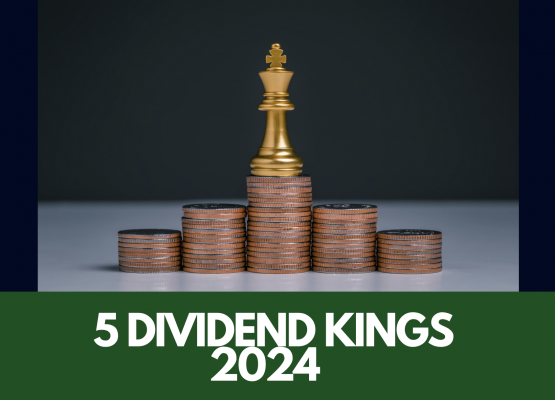In 2024, the global economic landscape has been shaped by various factors including geopolitical tensions, policy changes, and macroeconomic factors, which has set the stage for potential market volatility.
Ongoing adjustments in international trade policies, fluctuating interest rates as central banks navigate inflationary pressures, and the unpredictable nature of geopolitical conflicts that directly impact global markets are all potential factors to consider when it comes to market volatility.
Additionally, technological advancements such as fintech and artificial intelligence, along with shifts in consumer behavior continue to disrupt traditional industries, which adds another layer of complexity to the financial markets.
These elements combined have created a situation where investors must navigate through a sea of uncertainty, which makes the need for robust, adaptable investment strategies more important than ever.
The Importance of Diversification
Diversification across asset classes is a fundamental investment strategy aimed at reducing risk by allocating investments among various financial instruments, industries, and other categories. It works on the principle that different asset classes react differently to the same economic events. For instance, while stocks may offer high growth potential and can be volatile, bonds generally provide steady income and are less susceptible to market swings.
Real estate can add an additional layer of diversification, since it often moves independent of stocks and bonds. Commodities like gold can serve as a hedge against inflation. The balance between risk and return in diversified portfolios lies in the mix of assets that can potentially increase returns, while minimizing the impact that any single asset class can have on performance.
Consideration of Defensive Stocks
Defensive stocks are companies that provide consistent dividend payouts, along with stable earnings, regardless of the state of the overall stock market. These stocks belong to sectors including utilities, healthcare, and consumer staples—industries that provide essential services and products always in demand, even during economic downturns. These sectors historically perform well during market volatility, because their products and services are necessities, leading to predictable and stable cash flows.
Examples of these types of stocks would include utility companies known for stable returns, healthcare providers essential in all economic conditions, and consumer staples companies that sell everyday goods. These stocks tend to be less volatile than the overall market, providing a safe haven during downturns.
Long-Term mindset
Adopting a long-term investment horizon is very important as an investor, especially when it comes to dealing with volatility. This is due to the fact that markets tend to appreciate over time, despite short-term fluctuations.
Historical market data and trends demonstrate that periods of downturn are often followed by recovery and growth. The psychological aspect of investing is significant, since short-term market movements can lead to reactive decision-making, such as panic selling or chasing performance, which results in a deviation from ones long-term investment goals.
Thus, staying focused on your long-term objectives can help you ride out volatility, benefiting from the compound growth effect and avoiding common pitfalls associated with market timing.
Regular Portfolio Review & Rebalancing
Regular portfolio reviews can also be an important aspect to consider, to ensure that your investments align with both your financial goals and risk tolerance. This includes the common practice of portfolio rebalancing, which can be a very effective tool in assisting with necessary adjustments to your investments.
This process can involve assessing the performance of each asset class within your portfolio, and comparing it against benchmark indices. Rebalancing should be considered when an asset’s proportion deviates significantly from your target allocation, often set by strategic thresholds. Additionally, life changes including career moves, family growth, or shifting retirement goals can prompt a reassessment of your investment strategy, to ensure it remains suited to your evolving needs and circumstances.
Embracing Market Volatility
Market volatility is not just a challenge; it’s an opportunity for savvy investors to identify undervalued assets. During market dips, quality stocks may be unjustly penalized, which can present a potential buying opportunity. Identifying these stocks requires diligent research and analysis, looking at fundamental indicators such as P/E ratios, financial health, and industry position.
Due diligence is also critical, since it’s not just about buying low, but buying high quality companies at a discount. Investors should seek assets with strong long-term prospects that are currently undervalued due to broader market conditions, rather than reacting to short-term fluctuations.
Stay Informed
Staying informed can be beneficial, no matter what your investment strategy. Key information sources include economic indicators (like GDP growth rates, unemployment figures, and inflation data), market analysis, and financial news. These insights can signal market trends and potential investment opportunities.
However, discernment is essential, since not all sources are equally reliable. Consider prioritizing information from established financial news outlets and official economic reports. Be wary of speculative news, and cross-reference facts from multiple reputable sources to avoid making decisions based on misinformation.
Consider Working with a Professional
Consulting with financial advisors, especially during volatile times, can significantly enhance investment outcomes. They offer personalized planning tailored to individual financial goals, leveraging their deep understanding of market cycles to help guide solutions for your portfolio(s). Their professional experience allows them to identify opportunities and risks that may be overlooked by individual investors.
Additionally, financial advisors provide an emotional buffer against the market’s ups and downs, helping to maintain a strategic course without succumbing to reactionary impulses based upon short-term market movements. However, always consider whether or not a financial advisor or other investment professional is right for you, since some investors would be better off self-directing their portfolio(s).
In Summary
Navigating market volatility requires a well-thought-out strategy, underpinned by patience, education, and careful planning. Understanding the dynamics of diversification, the resilience of defensive stocks, and the advantages of a long-term perspective can help to fortify your portfolio against the unpredictability of market movements.
Regular reviews, an openness to market opportunities during downturns, informed decision-making, and consulting professional advice are key strategies. These practices will empower you to navigate the complexities of turbulent markets with confidence and foresight, turning potential challenges into avenues for growth and stability.




